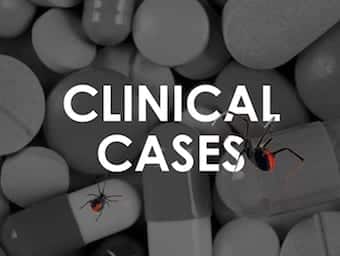
Bitten by a Redback Spider
A 27 year-old woman felt a sting on the back of the right leg while pulling on her tracksuit pants. She investigated further and discovered a small black spider, with a red-stripe on its back, crawling around in her tracksuit pants.


